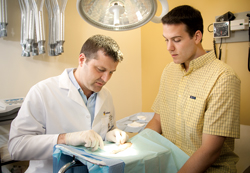‘Reform’ hasn't always equaled improvement of health care
ACP's incoming president lays out his agenda for the upcoming year and how the patient-centered medical home improves the enjoyment found in practicing primary care internal medicine.
I am excited about the opportunity to share my thoughts with you as the new president of the American College of Physicians. To provide some balance, I will ask my colleague Robert G. “Robin” Luke, MACP, chair of the Board of Regents, to write later from his perspective as an academic subspecialist. We both feel strongly that ACP speaks in the interest of all our patients and needs active involvement by all internists regardless of field or practice type.
In a future column I plan to write about a topic that is getting increasing traction in the health policy world: the patient-centered medical home. When I travel to various ACP chapters and meetings I hear a lot of reactions to this. Those who have been involved in demonstration projects almost invariably love it. That has impressed me. It's encouraging to hear such comments as “I love practicing medicine again. I am canceling my plans to retire.”
Comments from those who have had no direct contact with the patient-centered medical home, in contrast, are certainly more muted. Many say they are barely able to make expenses each month and cannot afford to restructure their practices.
Skeptics point out the various waves of “reform” over the years that have promised to change the world. At one point there was an ascendancy of primary care associated with managed care that drove med students away from many specialties. Another “reform” followed physicians once they'd settled into primary care practice. Private companies courted physicians to buy practices, ostensibly to the benefit of all. This business model did not work. Later hospitals began to buy practices, with mixed results.
Unlike these other models, I see the medical home as a real opportunity for us to align incentives and create the proper atmosphere to care for patients.
Our practice is taking baby steps toward becoming a patient-centered medical home, and I will share some details of this process in an upcoming column. I work in an eight-physician primary care practice that we own in my hometown of Fayetteville, Tenn. This practice traces its roots to 1909. It has seen many challenges since its founding, including the 1918 influenza epidemic, two world wars, one depression and numerous recessions. We have weathered these and other storms, but never have we been as challenged as we are in the current health care environment.
The business model for general internal medicine along with non-procedural subspecialties could be described as challenging at best. But effective primary care has many benefits, which are well articulated in an ACP white paper, “How Is a Shortage of Primary Care Physicians Affecting the Quality and Cost of Medical Care?”, available online. Those of us remaining in practice face increasing administrative and regulatory challenges. Within ACP, we continue to advocate for the meaningful long relationships between physician and patient that are strengthened with appropriate resources and adequate compensation.
Many areas of our society are changing, and general internal medicine appears to be at a real crossroads. We have challenges at every turn. We need mentors who are happy and effective role models for primary care medical students and residents. We need medical schools and training programs with proper tools and financing mechanisms that favor the production of the next generation of internists.
I love what I am able to do for my patients as a general internist, but like many ACP members I am frustrated by the barriers that often make it hard to do that job.
Internists care for the lion's share of the complex Medicare patients who generate the majority of Medicare charges. Strengthened primary care is absolutely essential to bending the health care cost curve that increasingly puts the financial future of our nation in jeopardy. We need to convince members of Congress that meaningful reform will not be easy and does not fit well within strict albeit well-intentioned “pay-go” rules that limit meaningful reform.
I look forward to communicating with you over the coming year. Please feel free to share your thoughts and perspectives with me to allow me to do a better job as your president.



